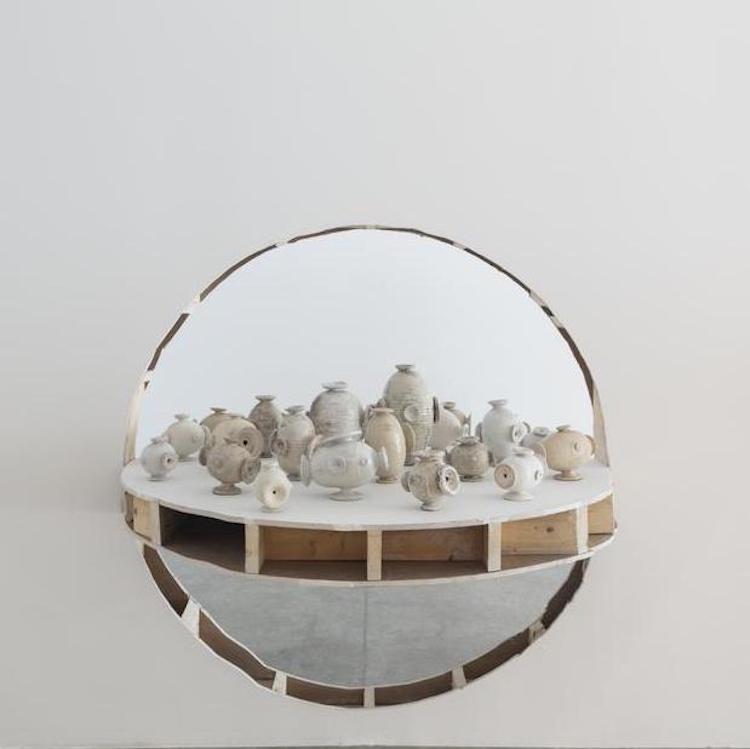NEW YORK––Adam Silverman’s exhibition The Occupation at Freidman Benda (New York, September 6 – October 13, 2018) is his largest show to date and an interesting case study on standing alone vs. standing together. When pots are presented in an installation the aesthetic impact comes from the assembly as a whole. Not every object in the group needs to be a masterpiece, or even close. Indeed, a mix of well resolved and poorly resolved objects en masse has its own visual excitement, it speaks of process, risk, mortality. Yes, both Occupation wall (black) 2018 and Occupation wall (white) (featured image) 2018 explore that landscape.
One of an installation’s charms is that it allows diversity of values––strong objects, weak objects, contradictions—all to find collective voice. On the other hand it can be a harbor for poor work made more significant by volume. Edmund de Waal being a case in point.
However, when an object is meant to stand alone, the rules change. It now has to occupy space with its singular voice, there is no wiggle room, no supporting cast, no distraction. If it is weak it fails.
That is the dilemma that faces me with Silverman’s current exhibition. He is a highly skilled exhibition designer. I first encountered him in 2011 when he designed the installation for Beatrice Wood: Career Woman at the Santa Monica Museum of Art, or SMMoA, (now named Institute of Contemporary Art, Los Angeles, or ICA LA). It was stunning, lucid, spacious and winning. I have never seen her work better presented.
So I wonder if, when he is preparing for his own shows, he thinks more about the collective than the individual. I greatly enjoyed the installation of the show and the installation works. The energy and discursiveness about a single form in multiple stages of realization does work very well particular with its “ears” that seem to listen to the viewer.
The figurative is deliberate as the Gallery explains:
“Though built from the standard units of functional pottery – ovoid bodies, thrown rims and feet – these elements are repositioned so as to suggest varied anthropomorphic poses. Indeed, Silverman refers to the pieces as “figures.” Within each installation, the configurations of the pots are “calculated and improvisational,” Silverman notes, much like the compositions of modern choreographers like Merce Cunningham”.
When I Iook at the stand-alone forms, pots or whatever they might be I find they often do not rise to the occasion. I sense a randomness that feels more accidental and untethered than purposeful. Again, OK in a crowd.
Creating a sense of organic spontaneity is tricky, there is a very fine line between loose and anything goes. If one feels that the artists hand, eye and mind is not guiding, albeit with a soft touch, the object become mute. So I look at the individual pots. I visualize them standing in say a home, encountering them every day. Do they holdup?
I have been following Silverman’s exhibitions closely for some years now. Perhaps it’s time for the potter to be unplugged, ten pots on ten boring white pedestals, set far apart, so there is no competition, no visual crutches and discover what happens when his eye and creativity is poured into one artwork at a time, each one performing its solo act. Sometimes it is good to return to the small stage.
Related reads:
http://cfileonline.wpengine.com/adam-silverman-ground-control-new-york-city-contemporary-ceramic-art-cflile/
http://cfileonline.wpengine.com/books-adam-silverman-ceramics/


















Add your valued opinion to this post.